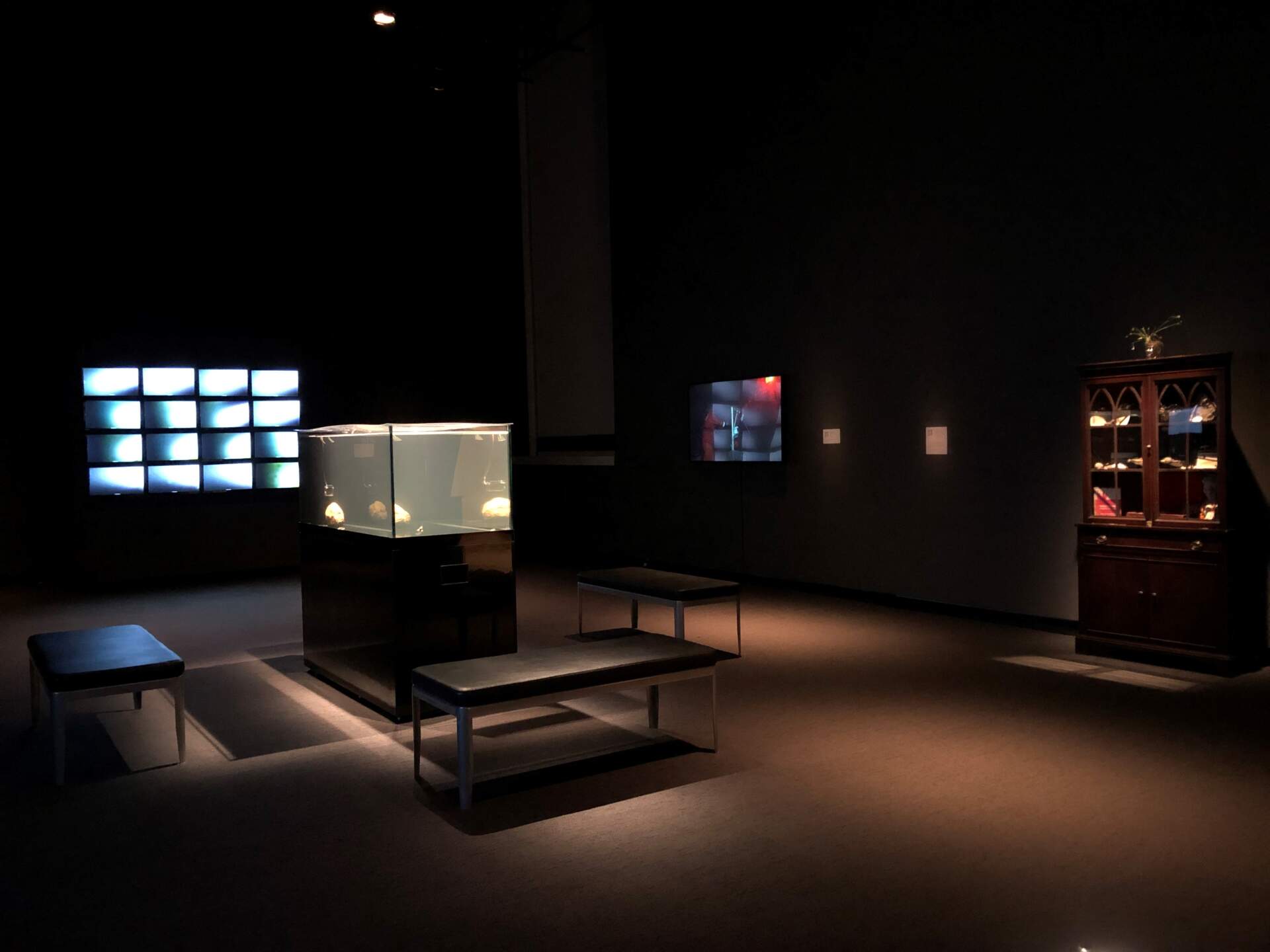
Installation Shot of Lake Sturgeon's Guide for Surviving the Anthropocene, 2021
Lake Sturgeons' Guide for Surviving the Anthropocene
Past
Aug 13, 2021 - Nov 28, 2021
While aquatic and terrestrial megafauna the world over are in dire straits, sturgeon are perhaps the most endangered species group on the planet. At present all 27 species of sturgeon and paddlefishes (Order Acipenseriformes) are found on the IUCN Red List, the majority being classified as Critically Endangered, with four species possibly extinct (http://www.iucn.org). Lake Sturgeon are one of two sturgeon species whose numbers are estimated to be increasing after long term efforts by scientists and conservationists throughout the United States, Canada and neighboring Indigenous Nations. These experiments in rewilding are marked by rigorous design, data collection and hypothesis testing, but only time will tell if these efforts have truly been successful, and whether or not these living fossils that survived the extinction of the dinosaurs will survive us.
Local sturgeon populations in Lake Erie and Lake Ontario are two of the few wild populations left in the U.S. This exhibition explores their profound and distinct effects on the nature and functioning of the ecosystems that they are a part of.
Lake Sturgeons' Guide for Surviving the Anthropocene (LSGFSA) is an experimental media artwork created by Anna Scime from nine years of research and fieldwork collaborations with scientists working in biology, geology and ecology. It consists of a series of short video essays and a multimedia installation comprised of interrelated pieces. The project examines history, art, culture, and language through an ecological lens pointed at a single species, and zooms outward from there. Observational, reflexive and poetic displays flow together to create a dialogic portrait of Lake Sturgeon and their ecosystem, while simultaneously examining our place as human beings in these same systems.
This project is generously supported by the Global Warming Art Project grant, Ben Perrone and the Environmental Maze project donors, and administered by the Art Services Initiative of Western New York.